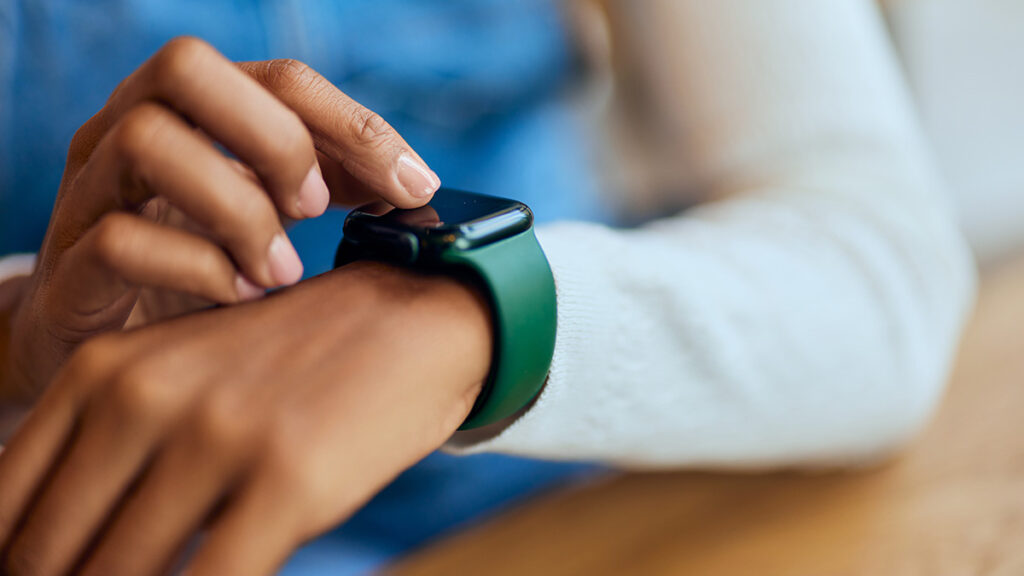In the post-pandemic, tech-first world, people seek devices that can unlock new conveniences and insights every day – and nothing can offer these capabilities quite like wearable technology.
Boosted by the development of 5G connectivity, edge computing, machine learning and the IoT, the wearable device market has grown significantly in recent years. Experts predict this upward trend will continue as the popularity of wearable technology continues to rise, with a Markets and Markets report projecting an 18% CAGR between 2021 and 2026.
For electronic product designers and original equipment manufacturers (OEMs), this presents exciting opportunities to capitalise on demand. Technological advancements are driving the development of products that are smaller, smarter and more valuable to consumers in a range of applications – from healthcare to entertainment.
However, as this sector grows increasingly competitive, ensuring quality remains the key priority for wearable device generation – especially as we see this tech being used in increasingly sensitive environments, such as medical or military settings.
So, how do you create a device that lives up to high standards and stands out from the crowd in 2024?
Here are five main considerations to keep in mind…
- Improving user experience
Considering that people may wear their smart devices for 24 hours a day, user experience is, above all else, the most critical factor in product design.
From fitness trackers to smart jewellery to wearable ECG monitors, all wearables must be light and comfortable whilst delivering customisable insights. That means designing an attractive, intuitive display interface and getting the ergonomics right to ensure the product is both practical and enjoyable.
This process might involve trialling different models to test their ‘glanceability’ – the optimum information density on limited screen space – and convenience.
What notifications does it need to display? How easy is it to clean? Does it sit flush against the body when worn in different places? What level of personalisation is required? Understanding and perfecting these variables will help product developers gain a competitive edge in this saturated market.
- Extending battery life
Battery life is another top consideration for aspiring wearable device developers.
Historically, the battery life of wearable tech products has been limited, as batteries are usually the heaviest component within these devices and, therefore, must be balanced with sensors and other crucial electronics. However, today’s lightweight batteries can offer higher energy density to prolong battery life without compromising other components.
Lithium-ion polymer batteries have these qualities and are often the top choice for modern wearables. Flexible and rechargeable, they are ideal for providing the correct power capacity for various garments and device types.
- Enhancing wireless connectivity
Connectivity is the backbone of all wearable devices, delivering the characteristic wireless functionality that enables end-users to wear them on the move.
As such, the implementation of appropriate transmitters and receivers is crucial. Product designers must consider a range of factors, such as the safety of wearable transmitters for use on human skin, how to ensure minimal latency, the impact of this integrated technology on electronics design and how far data will need to travel.
Antenna choice is especially important here. Wireless signals may be blocked or absorbed by the wearer, and any bending or compression of the antenna might impact the signals that reach the receiver, presenting possible issues with performance and accuracy – prompting researchers to seek more flexible antennae to compensate for these challenges.
- Delivering on miniaturisation
The miniaturisation of electrical components is core to the rapid proliferation of wearables. From batteries to printed circuit boards, product developers seek more compact, powerful elements that boost the efficiency and comfortability of the latest devices.
However, this miniaturisation must not come at the cost of performance. With so many components packed into a small space, efficient electronics design is critical to ensuring all the necessary connections are in place.
Multi-layer circuit boards and flex circuits are helpful here, addressing connectivity challenges whilst saving space. Cutting down mechanical component size is also crucial to optimising design; techniques like thin-wall injection moulding can create light yet durable parts that make all the difference to the final result.
- Balancing cost with quality
These days, wearable technology is at the core of many sensitive applications – especially in medicine, where wireless devices are revolutionising remote patient care and health monitoring.
As a result, the accuracy of these devices is essential. Every sensor and component must live up to stringent quality standards, ensuring reliability whilst remaining economical to produce at scale.
Therefore, product designers and OEMs must select durable components that can withstand the pressures of day-to-day wear.
Impact and moisture resistance testing is essential, as wearable devices are often exposed to sweat or water and might be dropped or roughly handled. So, every internal and external element must be sealed with protective coatings and strike the right balance between deflection and absorption to minimise the risk of damage during use.
Additionally, choosing suitable materials is vital to creating a product that appeals to consumers aesthetically and stands the test of time. As such, it is imperative to seek advice from a product realisation expert that can suggest metals, plastics, foams, rubbers and textiles with the right qualities to remain robust and wearable throughout a product’s life cycle.
Phil Simmonds is the CEO of EC Electronics, where over the past 26 years, he has taken the business from six to 320 employees and led several successful acquisitions.
